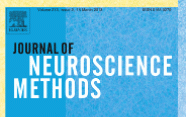
Submitted by Dr R. Inchingolo on Tue, 09/05/2017 - 13:55
Jenny Morton's research team in collaboration with Manchester University has used whisker movement to characterize motor deficits in mouse with Huntington's Disease
Motor dysfunction is a major component of the Huntington’s disease (HD) phenotype, both in patients and animal models. Motor function in mice is usually measured using tests that involve a novel environment, or require a degree of learning, which creates potential confounds in animals, such as anxiety and/or learning.
In this paper published in Journal of Neuroscience Methods, Jenny Morton's team in collaboration with Robyn Grant from Machester University propose that studying whisker control provides a more naturalistic way to measure motor function in HD mice. They tested three strains of HD mice; R6/2 (CAG250), zQ175 and Hdh (CAG50, 150 and 250) mice.
The researchers discovered a clear and progressive whisking deficit in the most severe model, the R6/2 CAG250 mouse. At 10 weeks, R6/2 mice showed an increase in whisking movements, which may be a correlate of the hyperkinesia seen in HD patients. By 18 weeks the R6/2 mice showed a reduction in whisking movements. Hdh Q250 mice showed a hyperkinetic profile at 10 weeks, approximately 4 months before other motor deficits have previously been reported in these mice. Q175 mice showed very little change in whisking behaviour, apart from a transient increase in retraction velocity at 10 weeks.
The findings suggest that whisking may be a more sensitive test of motor function in HD mice than more commonly used methods, such as the rotarod.
Whisking deficits could represent a novel way of assessing the progression of the motor phenotype, and are early indicators for reversal of phenotype studies, such as drug trials.

